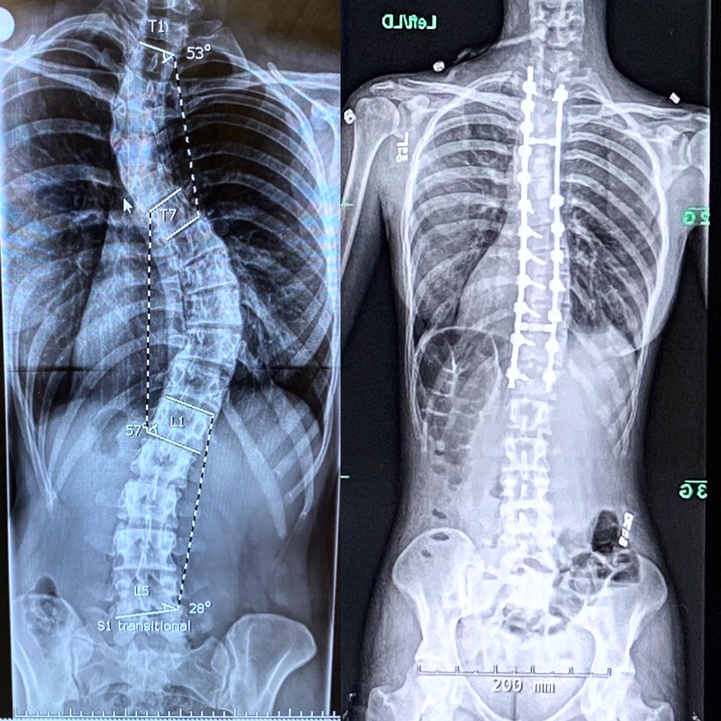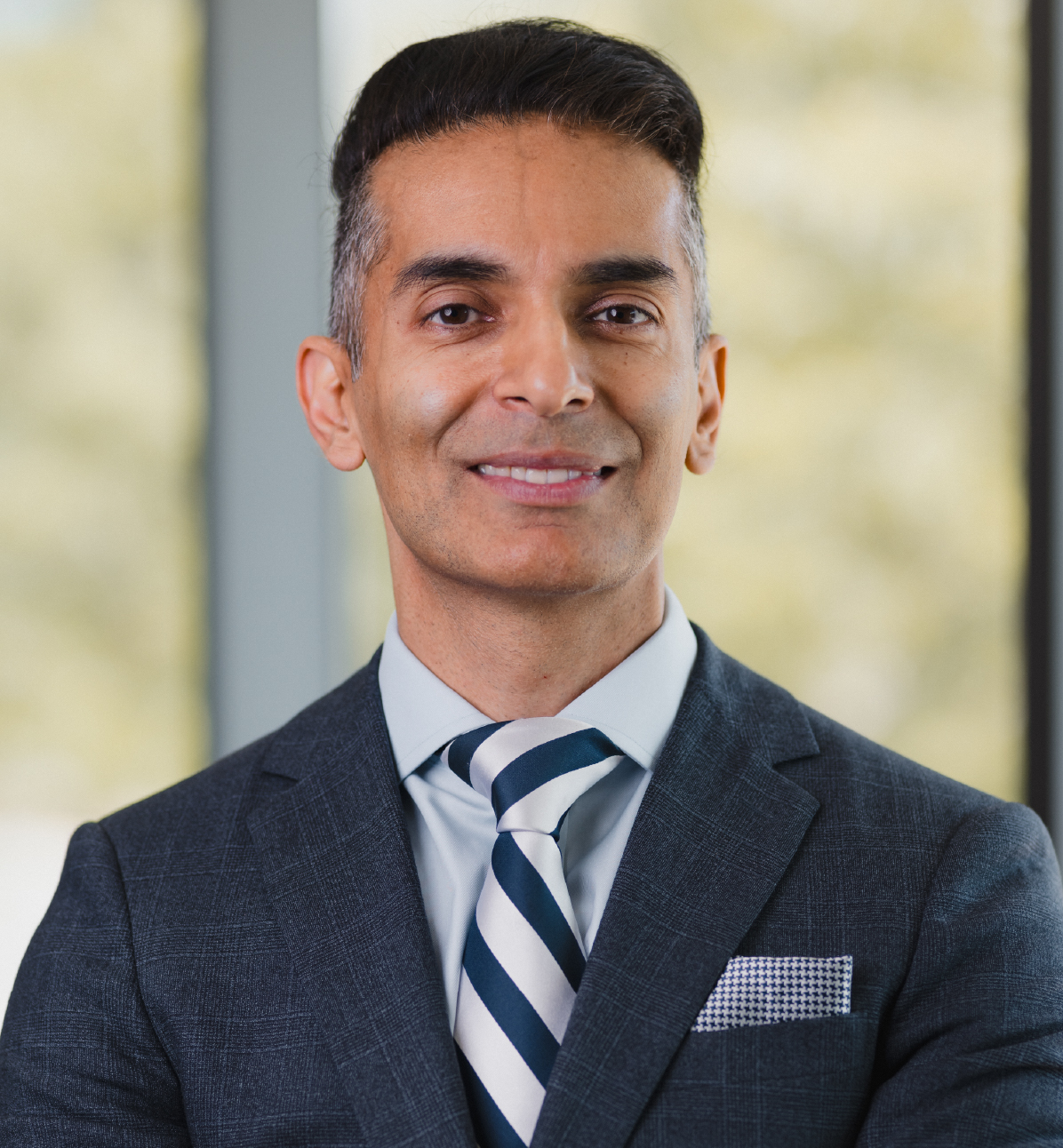
Patient Stories
Erica's Scoliosis Story
Date posted: 6/29/2021
Last updated: 6/29/2021
Table of Contents
The average person is born with 24 bones in their spine. Those bones do not remain perfectly straight in some people and can misalign into a sideways ‘s-shaped’ curvature called scoliosis. This condition can be painful and dangerous to internal organs. Scoliosis occurs most often during the growth spurt just before puberty – and tends to occur more frequently in girls.
Scoliosis is defined as a spinal curvature of at least 10 degrees based on a spinal x-ray. A curve that small might not be obvious or cause problems. But, if the curve progresses to 20 degrees or more, there is an increased chance that an observer might notice clothes hanging unevenly or the body tilting to one side.
June is National Scoliosis Month and a great time to learn more about your — or your child’s — spine health.
An estimated 3% of the population experiences some degree of scoliosis. The condition has been known to run in families and most often develops slowly over time. In a growing adolescent, treatment can include regular observation for curves less than 25 degrees, bracing to prevent the curve from getting worse, and, in some cases, spinal fusion surgery.
Meet Erica Hill
Erica Hill, 26, of Arlington Heights, IL, knew when to accelerate her scoliosis treatment.
“I was diagnosed with scoliosis when I was in 5th grade and I was super scared it would interfere with all of the sports I loved to play,” Hill explains.
Currently, a registered dietitian and a graduate student at Purdue University, Hill has competed in sports at a high level for most of her life. At 5’11”, she was a stand-out on her Hersey High School volleyball, basketball, and track teams and won the Female Athlete of the Year award her senior year.
After an early scoliosis diagnosis, she went for regular x-rays for six years to monitor the progression of her curve. She continued with sports and her spinal condition didn’t seem to interfere. Once she stopped growing, her curve was presumed to have stopped progressing as well, so she no longer went for x-rays.
That is until she rode an amusement park roller coaster at age 25 and could barely walk the next day. Eventually, the pain subsided but came back intermittently.
“I knew that my back was getting worse, and it was time to seek a higher level of care,” Hill says. “So, I went for a new x-ray which showed that I had progressed to a 58-degree curve.”
Finding the right specialist
After receiving that news, she met with five spine experts, including scoliosis expert Dr. Christopher J. DeWald of Midwest Orthopaedics at Rush.
“He was the one who really listened to me and understood my very active lifestyle and goal to get back to it,” she explains.

“He had an excellent surgical perspective but also treated me like a human being, not just a spine. I really trusted him.”
Dr. DeWald explained to Hill that her condition would continue to progress, and he recommended surgery soon to correct her curvature and stabilize her spine. He also explained that to heal, she would need adequate time to rest and dedicated caregivers. As a student with supportive parents, the timing seemed right.
Hill underwent spinal surgery at Rush University Medical Center under the care of Dr. DeWald. The surgery took 7 hours and included the insertion of two 14” rods that were permanently attached to her spine to prevent any future curvature. Following surgery, she limited her activities and after six months completed a course of physical therapy.
Today, almost one year later, Hill is walking outside, doing physical therapy exercises at home, and now stands one full inch taller at six feet. She looks forward to continuing her rehabilitation and getting back to biking and competing in volleyball tournaments.
“I have no regrets,” Hill says.
If you would like to talk with Dr. Christopher DeWald about your spine condition, including scoliosis, call 877.MD.BONES or visit www.rushortho.com.


